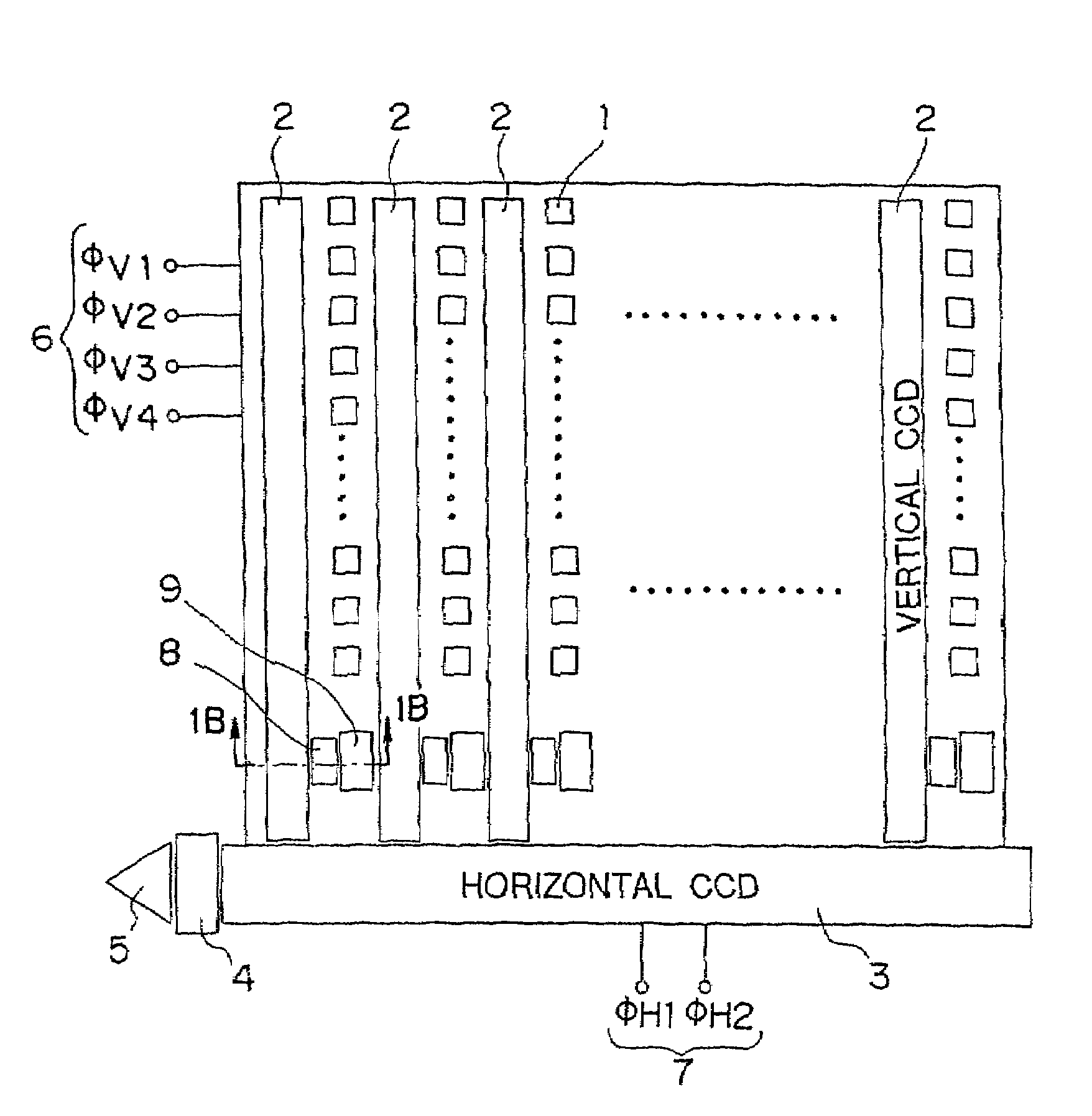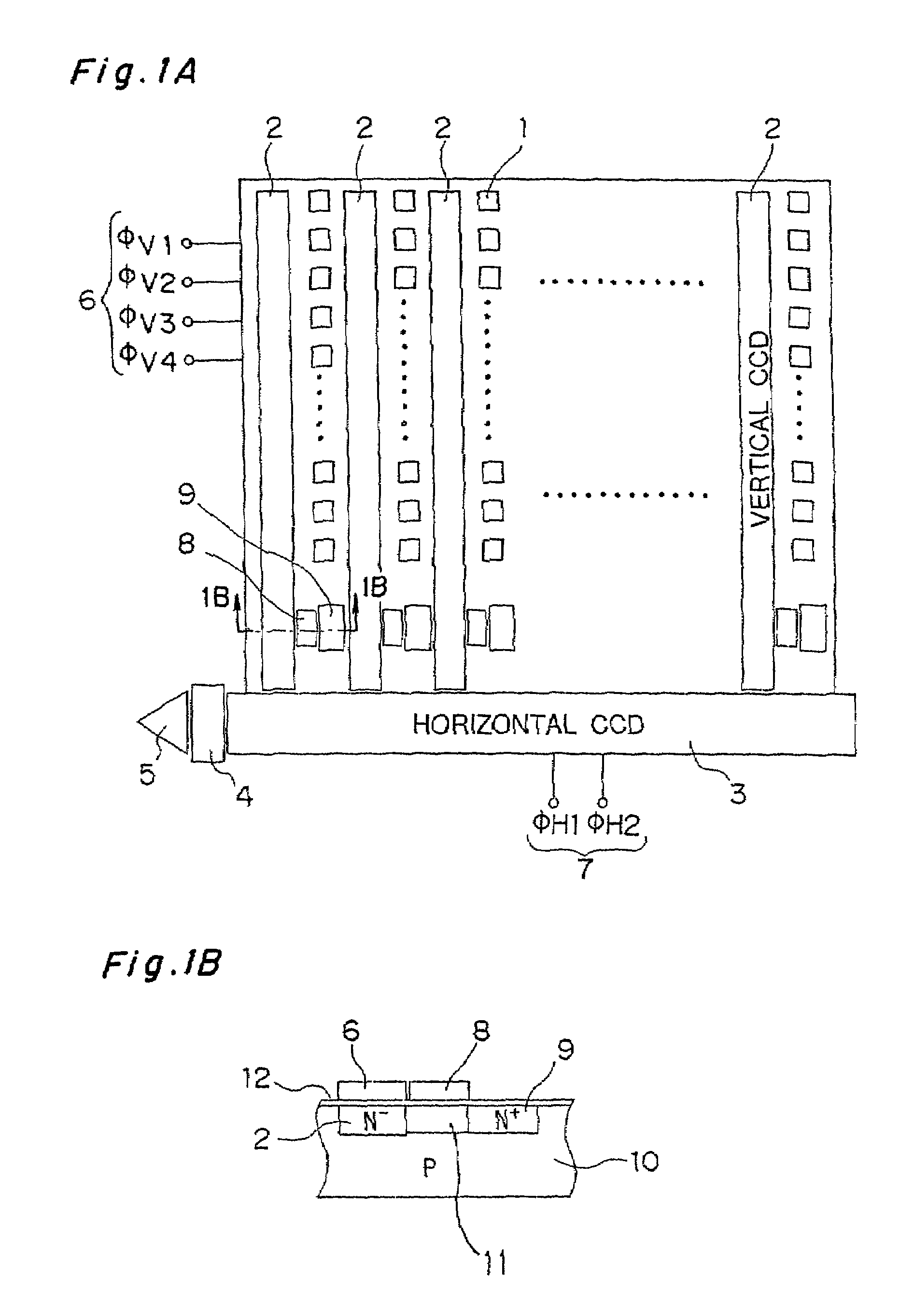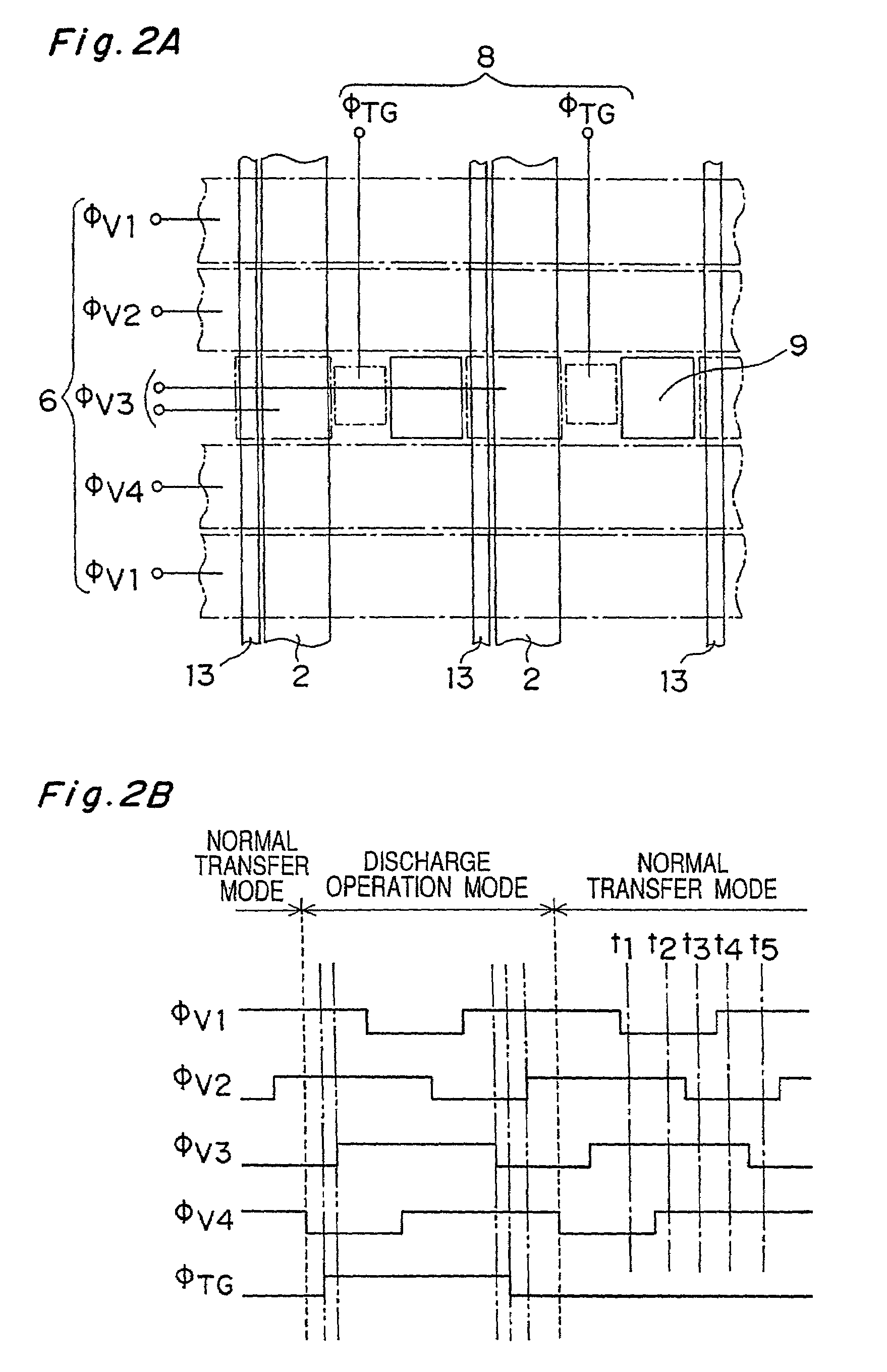Solid-state image pickup device with discharge gate operable in an arbitrary timing
- Summary
- Abstract
- Description
- Claims
- Application Information
AI Technical Summary
Benefits of technology
Problems solved by technology
Method used
Image
Examples
first embodiment
[0062]FIGS. 1A and 1B show a two-dimensional image sensor using CCD (Charge Coupled Device) as an embodiment of the solid-state image pickup device according to the present invention.
[0063]As shown in FIG. 1A, this two-dimensional image sensor is provided with a plurality of vertical CCD 2 arrayed at predetermined intervals and a plurality of light receiving sections 1, 1, 1 . . . , each composed of a photodiode, which are arrayed between these vertical CCD 2. One horizontal CCD 3 is disposed adjacent to one end of the vertical CCD 2, 2, 2 . . . . A charge voltage converting section 4 and an amplifier 5 are successively disposed at one end of the horizontal CCD 3. The vertical CCD 2 has vertical transfer electrodes 6 and the horizontal CCD 3 has horizontal transfer electrodes 7. In this embodiment, the vertical CCD 2, the horizontal CCD 3 and the discharge drain region 9 are n-type semiconductor layers.
[0064]As shown in FIG. 1B, the vertical CCD 2 is formed in a Si substrate 10 made...
second embodiment
[0084]FIG. 5A shows a structure according to a second embodiment of the invention. In the second embodiment, the discharge gate 28 covers part of the vertical CCD 22. In FIG. 5A, reference numeral 22 denotes a vertical CCD, 26 denotes a vertical transfer electrode, 28 denotes a discharge gate, 29 denotes a discharge drain, and 13 denotes a channel stop.
[0085]The second embodiment has a structure for preventing leftover charges, which occurs when the discharge gate 28 and the vertical CCD 22 do not overlap. The discharge gate 28 covers part of the vertical CCD 22.
[0086]FIG. 5B is a cross section view of the potential distribution along 5B-5B in FIG. 5A. When a high voltage is applied to the discharge gate 28, the potential distribution shown with a broken line is obtained and charges are discharged from the vertical CCD 22 towards the discharge drain 29.
[0087]On the other hand, FIGS. 6A–6C are cross sectional views of the potential distribution along 6A—6A in FIG. 5A. These potential...
third embodiment
[0092]FIG. 9A shows a layout according to a third embodiment. In the third embodiment, a voltage VD applied to the discharge drain 49 is made variable in the layout according to the second embodiment shown in FIG. 5A.
[0093]FIG. 9B shows waveforms of signals φV1–φV4 to the transfer electrodes 6, a signal φTG to the discharge gate 48 and a voltage VD applied to the discharge drain 49 in the structure shown in FIG. 9A in a normal transfer mode and a discharge operation mode. In the third embodiment, a high voltage VD is applied to the discharge drain in a discharge operation mode during a period including a period when the signal φTG is high as shown in FIG. 9B.
[0094]FIG. 10A is a cross sectional view along 10A—10A in FIG. 9A. FIG. 10B shows a potential distribution corresponding to the cross sectional configuration in FIG. 10A. As shown with a solid line in FIG. 10B, the voltage VD applied to the discharge drain 49 is low and the potential well P1 of the discharge drain 49 is shallow ...
PUM
 Login to View More
Login to View More Abstract
Description
Claims
Application Information
 Login to View More
Login to View More - R&D
- Intellectual Property
- Life Sciences
- Materials
- Tech Scout
- Unparalleled Data Quality
- Higher Quality Content
- 60% Fewer Hallucinations
Browse by: Latest US Patents, China's latest patents, Technical Efficacy Thesaurus, Application Domain, Technology Topic, Popular Technical Reports.
© 2025 PatSnap. All rights reserved.Legal|Privacy policy|Modern Slavery Act Transparency Statement|Sitemap|About US| Contact US: help@patsnap.com



